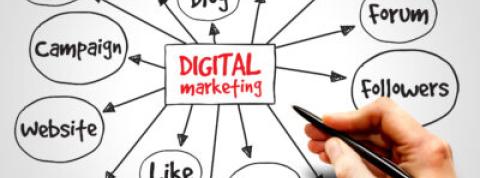
5 tips for optimizing your conversion tunnel
Whether you're selling a product or a service, an effective conversion tunnel is essential to your success. With the right strategy, you can convert more prospects into customers and increase your profits. The key to optimizing the conversion tunnel is finding the best content to engage prospects and convert them into paying customers. But how exactly do you go about it? To support the digital transformation of companies, discover our Master's in Digital Marketing and propel your career in the marketing and communications professions!
What is a conversion tunnel ?
The conversion tunnel, also known as the "funnel", is a key concept in digital marketing. It describes the journey a prospect follows from their first interaction with a brand to the achievement of the final objective, usually a key action such as a purchase, registration or contact request. This process is represented in the form of a funnel to illustrate the progressive decrease in the number of prospects at each stage: while many visitors enter the tunnel at the outset, only a few will lead to conversion. The objective of the funnel is therefore to accompany these prospects along the tunnel, optimizing each stage to maximize the chances of conversion.
A conversion tunnel generally consists of several stages, each representing a critical moment in the purchasing decision. During the discovery phase, the user becomes aware of your brand or product via channels such as social networks, search engines or advertisements. At this stage, they are often looking for information. During a second stage of consideration, the user takes a closer look at your products or services. He compares, consults reviews, and evaluates your proposals in relation to his needs. Finally comes the moment of decision, when the user is ready to take action. This is where the last hesitations are removed, often thanks to clear calls to action (CTAs) and incentives such as discounts or customer testimonials.
5 Tips for optimizing your conversion tunnel
Tip 1: Improve the clarity and simplicity of the user journey
The first lever of optimization lies in the fluidity of the user path. If prospects encounter obstacles or complex steps, they risk giving up before they even reach conversion. That's why it's crucial to simplify every stage of your sales funnel:
Facilitate access to information and products by eliminating unnecessary distractions.
Optimize the user interface (UI) and user experience (UX) by ensuring that every page is intuitive and functional.
Ensure that the conversion process (e.g.: form, payment, registration) is simple and fast.
The aim is to limit any friction that might discourage users in their journey.
Tip 2: Target the right users from the start of the tunnel
There's no point in attracting visitors who aren't interested in your products or services. Good optimization starts with precise targeting. Use tools like segmented ads, SEO or social networks to attract the right profiles right from the start. Segment your audience according to relevant criteria such as age, location, or interests to focus your marketing efforts on those prospects most likely to convert.
Precise targeting not only improves conversion rates, but also the overall effectiveness of your sales funnel.
Tip 3: Create content that's relevant and engaging at every stage
The content you offer must be adapted to the phase the user is in. A prospect in the discovery phase doesn't expect to receive the same information as a customer in the decision phase. To achieve this:
In the discovery phase, highlight informative content, such as blog articles or explanatory videos.
In the consideration phase, offer product comparisons, case studies, or buying guides to convince the prospect of the relevance of your offer.
In the decision phase, use clear, punchy calls to action, combined with attractive offers (discounts, free trials, etc.).
Each step needs to be enriched with relevant content to support the prospect and encourage them to move forward down the sales funnel.
Tip 4: Analyze blocking points and make ongoing adjustments
To maximize the effectiveness of your sales funnel, it's essential to identify the stages at which prospects give up, and to correct these blocking points. Use analysis tools such as Google Analytics or A/B testing to understand user behavior:
Where do they leave your site?
What elements do they click on the most?
Which version of a page gets the most conversions?
This data will enable you to adjust the tunnel elements in real time, so as to optimize the conversion rate on an ongoing basis.
Tip 5: Optimize conversions
Prospects need to be reassured before finalizing a conversion. Social proof, in the form of customer testimonials, reviews or case studies, is an excellent way to build this trust. What's more, you'll be offering guarantees that reduce perceived risks:
Highlight your customers' positive reviews.
Offer guarantees such as free returns, risk-free trials or a clear refund policy.
These elements considerably weaken the psychological disincentives to purchase, and can significantly increase the conversion rate, especially in the decision-making phase.
If you're passionate about conversion and user experience, and want to deepen your digital marketing skills, we invite you to discover our Master's in Digital Marketing. This comprehensive program, including 360° training on all digital levers, will give you the knowledge and tools you need to excel in this fast-moving field.